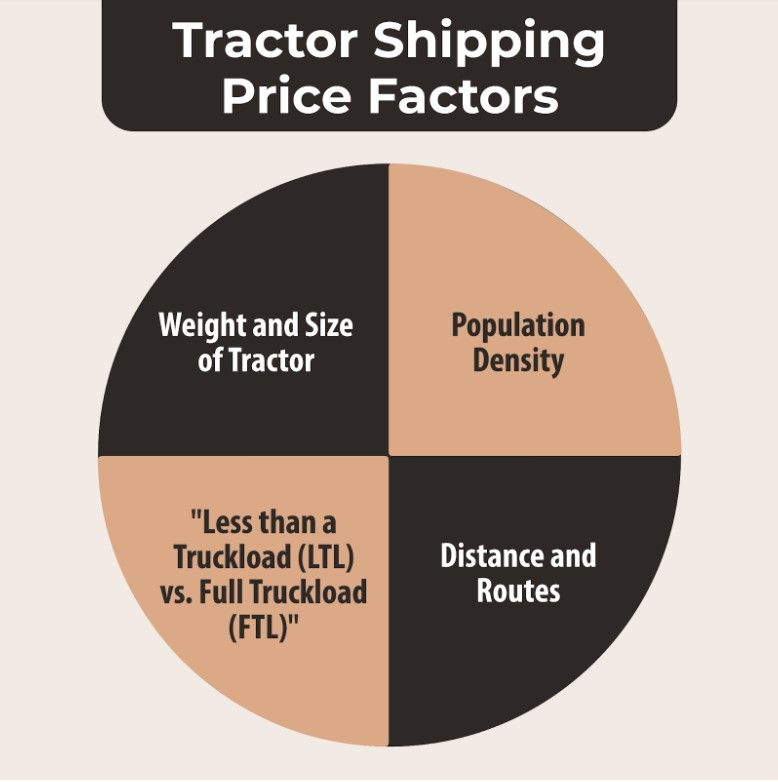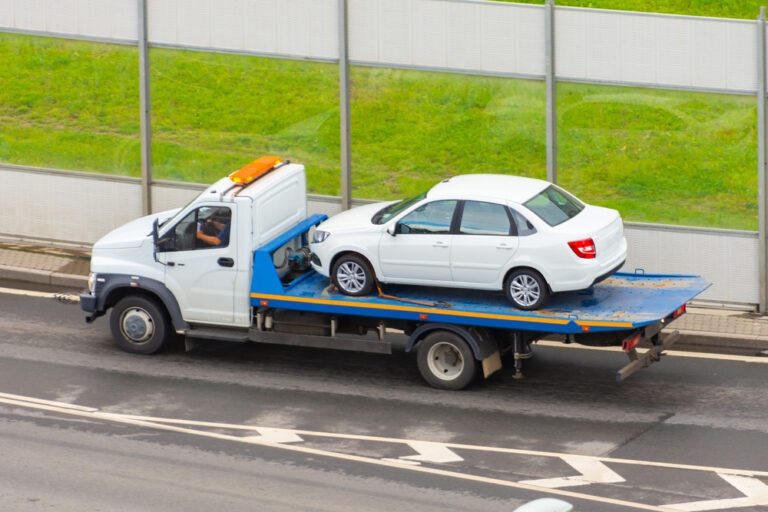
How Tractor Shipping Works.
You have a tractor that you need to move from farm to farm. How are you going to do that?
Unless you have one of these top-speed tractors, driving it is probably not an option. The bottom four top speed tractors only go 37 miles an hour, which means it would take a long time to get anywhere unless the move is pretty local and only a few miles.
Enter professional heavy haul shipping companies, like ShipLux. They can help you get your tractor where it needs to go while handling all of the logistics is the best way to get this important piece of equipment to its destination.
How are Tractors Shipped
The best way to ship a tractor is on a flatbed trailer (with the aid of a ramp or a loading dock). Why? Because the tractor can be easily driven onto the flatbed. If the tractor is non-functioning, then a different approach or specialty loading equipment might be used (adding to your cost).
Depending on the size of the tractor, it will probably be shipped in one piece. Larger tractors may require some disassembly or removal of attachments.
If you have a smaller tractor, you may be offered enclosed shipping as an option. But let’s be honest, tractors are built to be exposed to the elements and handle the outdoors. Enclosed shipping is an excellent option if you want to protect a unique car or truck from exposure to the elements, but there is no need for the added expense when it comes to your tractor.
How Much Does It Cost to Ship a Tractor?
As with shipping almost any vehicle, there are a variety of elements that go into calculating the cost of shipping your tractor. We wish we could give you an easy answer, but the truth is that every vehicle and shipping request comes with its own unique set of needs. The only way to get an accurate price estimate is to get transparent price quote from ShipLux – anything else would just be a guess!
While we can’t give you a ballpark price, we can explain what influences the cost of shipping your tractor We can also promise to provide transparent pricing quotes, without any hidden costs or fees.
First a general breakdown of the considerations that affect the cost of shipping your tractor:

Size Matters
The bigger the tractor, the more expensive it will be to ship. That sounds pretty simple, but actually, it’s a little more complicated than that.
Tractors come in all different shapes and sizes ranging from the Mini Sirio 4x4m, with a width of a little over 2 feet, and a weight of a thousand pounds. Compare that to Big Bud 747—the world’s largest tractor—which is 27 feet long, 25 feet wide, 14 feet tall, and weighs more than 135,000 lbs.
Woah, that’s really big! Your average farm tractor weighs a “measly” 20,000 lbs. or so.
Anyway, part of the cost calculation for shipping your tractor will depend on how much space it takes up on the truck. A smaller tractor can share truck space with other equipment going nearby. This is known as Less than a Truckload (LTL) shipping. By sharing space with other items, the cost becomes lower, but it may also add a little time to your shipment.
A larger tractor will take up all the full truckload (FTL), which means it will be more costly to ship. If it is huge, like Bug Bud, then it might be considered an oversized load that requires special permits and pilot cars. These, of course, add to the overall cost of shipping.
Distance Matters
We all know that gas prices are currently high, thanks to things like inflation and the war in Ukraine. As of the date of this writing (May 2, 2022) diesel is averaging over $5.00 a gallon. If you are interested, you can check on the current cost of gas at AAA.
You will be charged per mile when shipping your tractor. However, the good news is that price is usually lower per mile when the distance is longer. So, even though it will cost you more money for longer distances, at least you get some savings.
Unfortunately, tractor shipping companies have no control over the cost of fuel.
Location matters
On our pie chart up above, you will see “population density” as one of the concerning factors when it comes to the cost of shipping a tractor. How does that work?
The closer you are to the highways that are near highly populated areas (like I-90 or I-70) the lower the cost of shipping your tractor. If you live more than 200 miles from a large population center, your cost will be higher. Of course, many farms are found in more rural areas.
Why does this happen? It’s simple really. If a truck is carrying a single tractor to a farm in the middle of nowhere, they may not have a load for the return trip or may have to travel a long distance to pick up their next load. This is known as deadheading and can be problematic for a number of reasons—including the fact that often truckers are not paid for this trip, and the cost of delivering your tractor becomes higher.
Get a Transparent Tractor Shipping Price Quote from ShipLux
There are a few other factors that can affect the cost of shipping your tractor. The best thing you can do is to reach out to transport companies that specialize in heavy hauls, and compare and contrast what they have to offer.
One thing to look for is a company that offers price transparency, explains all of the logistics to you, and answers all your questions with a team of shipping specialists who provide 24-hour service.
That’s what we do at ShipLux! Reach out for a no-obligation price quote today.
Recent post

General Shipping Information
Debunking Common Vehicle Transport ...

Car Shipping